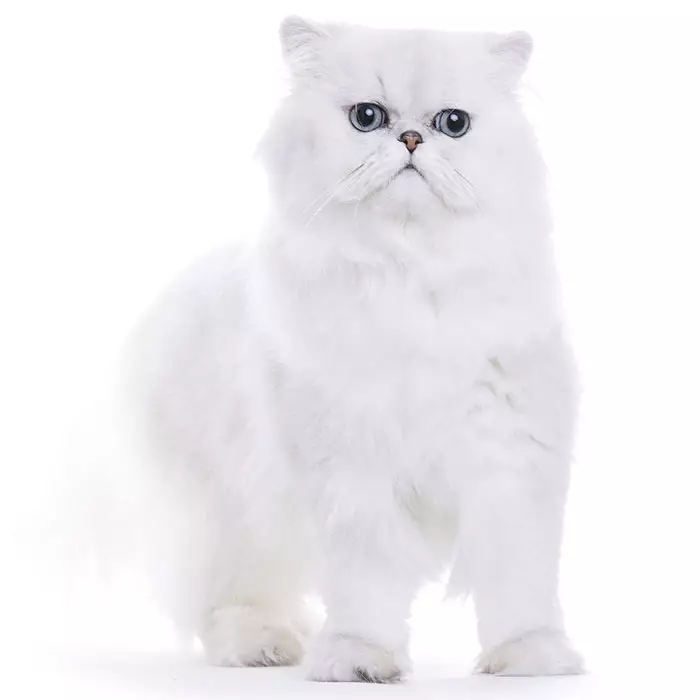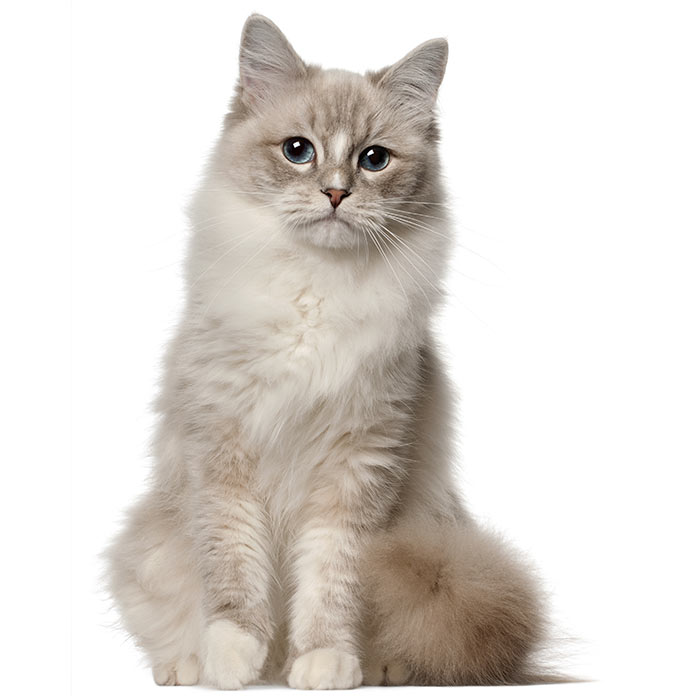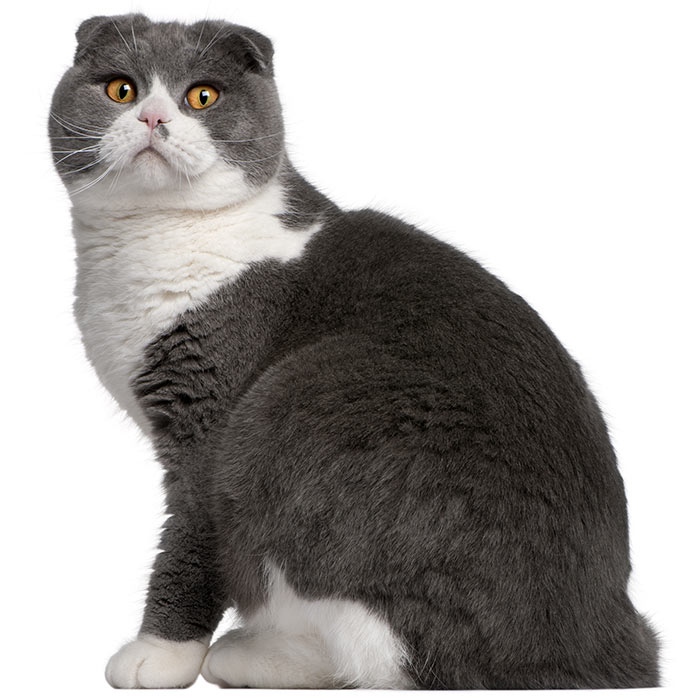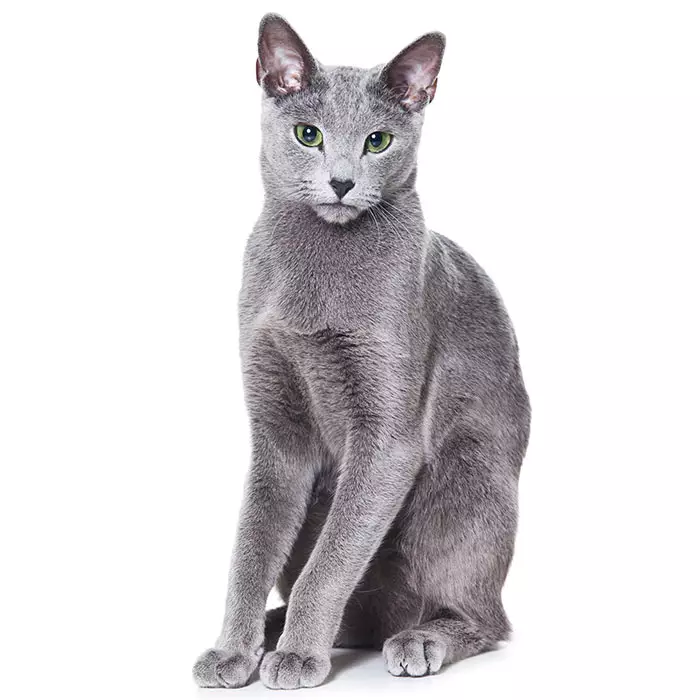Chinchilla


| Recommended for | Singles, seniors or families in calm and quiet environments |
| Breed Classification | Persian, longhair |
| Other names | Chinchilla Persian, Chinnie |
| Lifespan | 12 to 15 years |
| Size | Medium to large |
| Temperament | Gentle, quiet, and affectionate |
| Intelligence | Moderately intelligent; they enjoy a calm environment and respond well to routine and familiar interactions |
| Tendency to vocalise | Quiet, soft-spoken, using soft meows, gentle purrs and occasional chirps |
| Maintenance Level | High grooming needs, requiring daily brushing and regular coat care to prevent matting and maintain coat health |
| Health Risk | Prone to inherited conditions such as polycystic kidney disease, and tear duct issues; also can suffer from dental issues and brachycephalic airway syndrome. |
Insuring a Chinchilla?
Get our award-winning Nose-to-Tail Cover with up to $30k annual benefit limit, up to 90% of eligible vet bills back, and no sub-limits.
Get a quick quote
Is this breed right for you?
Try our breed selector quiz to find out your best matching breed!
Insuring a Chinchilla?
Get our award-winning Nose-to-Tail Cover with up to $30k annual benefit limit, up to 90% of eligible vet bills back, and no sub-limits.
Get a quick quote
Breed history of Chinchillas
The Chinchilla cat first appeared in England in the late 19th century, when breeders began selectively developing Persians with lighter, silvery coats. The name “Chinchilla” was chosen because the cats’ sparkling coats resembled the luxurious fur of the South American chinchilla rodent.
The foundation cat was a female named Chinnie, born in 1882, whose offspring carried the striking pale undercoat and delicately tipped fur that would define the variety. From this line came Silver Lambkin, a male who went on to win major prizes at the Crystal Palace Cat Show in 1894 and is often regarded as the father of the modern Chinchilla Persian.
Over time, breeders refined the look into several variations, including the Chinchilla Silver, Shaded Silver, and later, Golden forms, all prized for their shimmering coats. Though sometimes treated almost like a separate breed, chinchillas remain part of the Persian family, recognised in the Silver & Golden Division by most cat registries.

Physical description of Chinchillas
Chinchillas are medium-to large-sized cats with a sturdy build and an elegant, regal appearance. They have a broad, rounded head with a short nose, small ears, and large, round green eyes. Their legs are short and strong, and the tail is thick and bushy.
One of the most distinctive features of the Chinchilla is its long, dense coat with a shimmering silver or golden hue. Their coat is lightly tipped with black or gold, giving it a sparkling effect. The contrast between the pale undercoat and dark tipping is especially striking around the face and tail.
| Weight range | Males: 4.5 to 6.5 kg; females: 3.5 to 5.5 kg. |
| Height range | 25 to 38 cm at the shoulder |
| Colours | White undercoat with light black, silver or golden tipping |
| Coat length | Long and plush |

Chinchilla personality and temperament
Chinchillas have a very quiet, affectionate and gentle nature and make great companions for individuals and families in calm and relaxed households. Their patient and tolerant temperament allows them to adapt well to family life, although they may take time to settle in and warm to people. Once settled, they form close relationships with their owners and become very attached to them.
Definitely indoor cats, they love lying around the house relaxing and looking beautiful while quietly observing their surroundings. They enjoy being near their family and crave company, but are not overly demanding of attention. Independent-minded, they prefer to interact on their own terms.
Chinchillas are well-suited for apartment living due to their gentle and low-energy nature. They do not require a large space to stay content and enjoy having cosy areas to rest, along with soft toys and scratching posts for enrichment. Their quiet temperament makes them an excellent choice for small households.

Chinchillas with kids and other pets
Chinchillas are usually good with older children and other pets, particularly in calm homes with respectful handling. However, they don’t tolerate small, boisterous children very well, as they prefer a prefer a slower pace, minimal noise and engaging in interactions on their own terms.
Chinchillas so enjoy company that if you are going to be gone for most of the day, it’s best to get them a friend.

Chinchilla training and exercise
Chinchillas have low to moderate energy levels and are not highly active. They enjoy quiet play sessions and gentle interaction but are equally content resting in a sunny spot or observing from a perch. Regular play, gentle daily exercise and a predictable routine will keep them mentally stimulated and emotionally settled.
Daily gentle play sessions are important to help maintain a healthy weight and keep them engaged without overwhelming them. This includes quiet play with feather toys, balls, and soft interaction with their owners. Cat trees, padded perches, and scratching posts provide additional mental enrichment and light activity.
| Energy level | Low to moderate |
| Exercise requirements | Moderate |

Chinchilla feeding and nutrition
The Chinchilla thrives on a balanced diet comprised of high-quality, protein-rich food, which is important for maintaining healthy skin, a strong immune system, and lean muscle mass. A mix of wet and dry food is recommended to support hydration and dental health. Look for diets enriched with omega fatty acids, vitamins, and minerals to promote coat condition and overall wellbeing.
Portion control is essential, as Chinchillas can be prone to weight gain if overfed. Meals should be split into two or three servings per day to help manage their weight and digestion. Fresh water should always be available, and it’s best to consult your vet for specific dietary advice based on your Chinchilla’s age, health, and lifestyle.

Chinchilla care and grooming
The Chinchilla has a long, dense coat that sheds heavily and requires daily grooming to prevent matting and tangles. A wide-tooth comb and soft brush are ideal for removing loose hairs and maintaining the coat’s condition.
While regular bathing isn’t essential, occasional baths can help reduce shedding and keep the fur clean. Routine grooming should also include ear cleaning, nail trimming, and dental care, such as tooth brushing or dental treats, to support long-term health.
Health issues for Chinchillas
- Polycystic kidney disease is an inherited condition that causes fluid-filled cysts to form in the kidneys, potentially leading to kidney failure. Regular ultrasound screenings and blood tests can help detect and manage this condition early.
- Brachycephalic Airway Syndrome can affect Chinchillas due to their flat facial structure. This may lead to breathing difficulties, particularly in hot or stressful conditions. Keeping them cool and avoiding overexertion is important for managing symptoms.
- Eye Discharge and tear staining are common due to their facial structure and shallow tear ducts. Gentle daily cleaning around the eyes can help minimise staining and prevent irritation.
- Dental disease is also a concern, as their small mouths and flat faces can make them prone to plaque buildup. Regular brushing and dental check-ups are recommended.
Not all conditions are covered by Pet Insurance. For details of Bow Wow Meow Pet Insurance cover, refer to the Product Disclosure Statement.
Free engraved pet ID tag on sign up3
Customer Satisfaction
21 day cooling off
Easy to use Pet Portal






